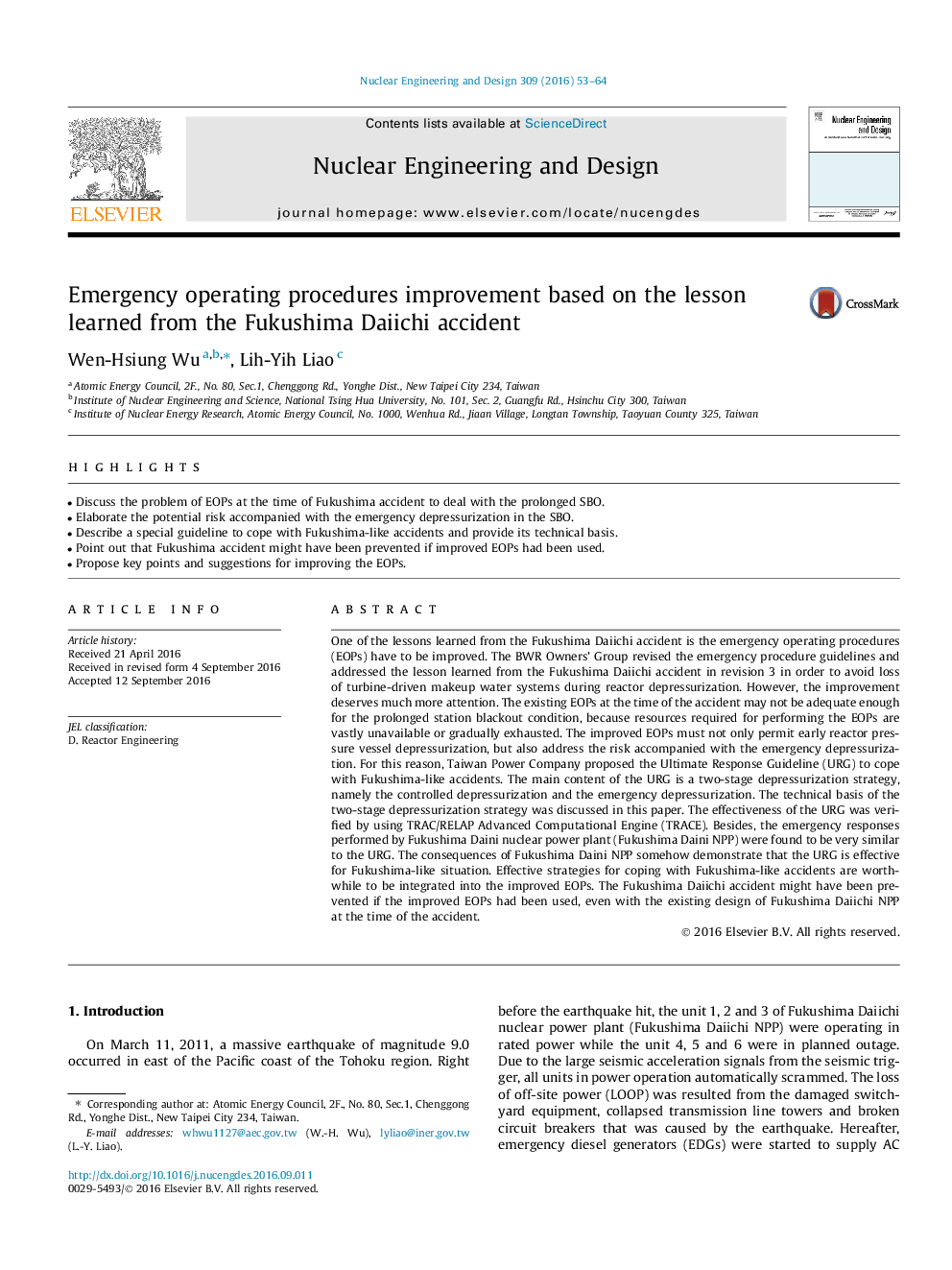| Article ID | Journal | Published Year | Pages | File Type |
|---|---|---|---|---|
| 4925855 | Nuclear Engineering and Design | 2016 | 12 Pages |
Abstract
One of the lessons learned from the Fukushima Daiichi accident is the emergency operating procedures (EOPs) have to be improved. The BWR Owners' Group revised the emergency procedure guidelines and addressed the lesson learned from the Fukushima Daiichi accident in revision 3 in order to avoid loss of turbine-driven makeup water systems during reactor depressurization. However, the improvement deserves much more attention. The existing EOPs at the time of the accident may not be adequate enough for the prolonged station blackout condition, because resources required for performing the EOPs are vastly unavailable or gradually exhausted. The improved EOPs must not only permit early reactor pressure vessel depressurization, but also address the risk accompanied with the emergency depressurization. For this reason, Taiwan Power Company proposed the Ultimate Response Guideline (URG) to cope with Fukushima-like accidents. The main content of the URG is a two-stage depressurization strategy, namely the controlled depressurization and the emergency depressurization. The technical basis of the two-stage depressurization strategy was discussed in this paper. The effectiveness of the URG was verified by using TRAC/RELAP Advanced Computational Engine (TRACE). Besides, the emergency responses performed by Fukushima Daini nuclear power plant (Fukushima Daini NPP) were found to be very similar to the URG. The consequences of Fukushima Daini NPP somehow demonstrate that the URG is effective for Fukushima-like situation. Effective strategies for coping with Fukushima-like accidents are worthwhile to be integrated into the improved EOPs. The Fukushima Daiichi accident might have been prevented if the improved EOPs had been used, even with the existing design of Fukushima Daiichi NPP at the time of the accident.
Related Topics
Physical Sciences and Engineering
Energy
Energy Engineering and Power Technology
Authors
Wen-Hsiung Wu, Lih-Yih Liao,
